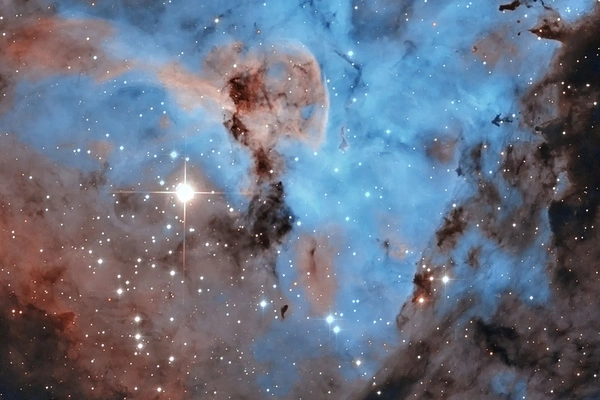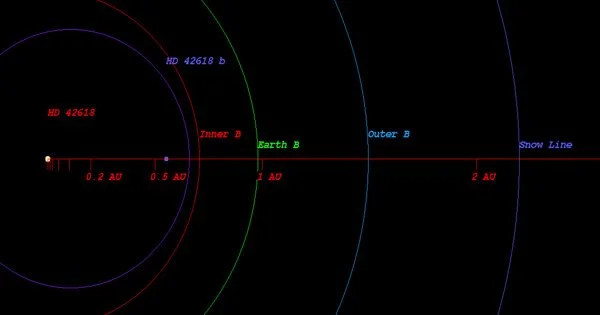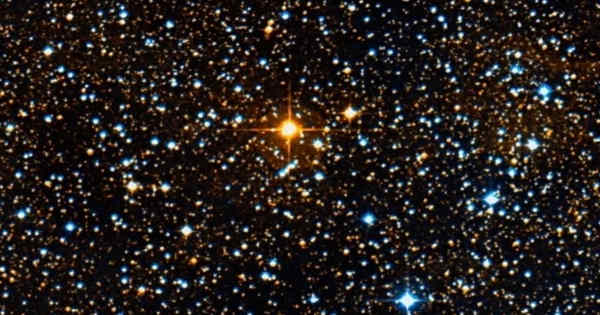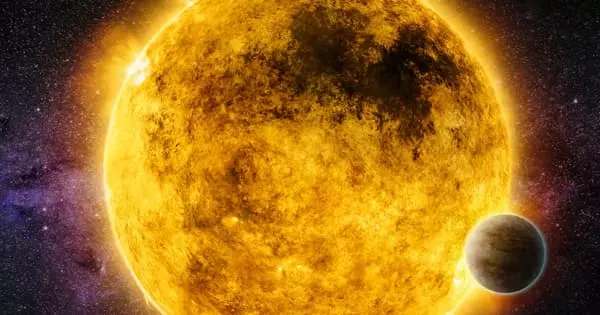The Keyhole Nebula is a large and complex emission nebula located in the constellation of Orion. It is also known as NGC 3324 and is situated near the famous Orion Nebula (M42). The Keyhole Nebula is part of a much larger star-forming region called the Carina Nebula Complex, which is located about 7,500 light-years away from Earth.
It is a small dark cloud of cold molecules and dust within the Carina Nebula that contains bright filaments of hot, fluorescing gas that stand out against the much brighter background nebula. John Herschel used the term “lemniscate-oval vacuity” when first describing it, and subsequently referred to it simply as the “oval vacuity”.
The term lemniscate was used to describe this portion of the nebula until 1873, when popular astronomy writer Emma Converse described the nebula’s shape as “resembling a keyhole” in an Appleton’s Journal article. The name Keyhole Nebula became popular, sometimes referring to the Keyhole itself, and other times referring to the entire Carina Nebula (signifying “the nebula that contains the Keyhole”).

The Keyhole Nebula gets its name from a dark, keyhole-shaped region of dust and gas that obscures the bright emission nebula behind it. This dark region is actually a cold molecular cloud, which is thought to be in the process of collapsing and forming new stars. The radiation from the newly formed stars is causing the surrounding gas to ionize and emit light, creating the bright emission nebula that we can see.
The nebula contains both bright regions that glow due to fluorescent emission from ionized gas and dark regions that are obscured by dense molecular gas and dust. The Keyhole Nebula is a site of active star formation, with stars ten times hotter and 100 times more massive than the Sun. The Carina Nebula as a whole is about 200 light years across, but the Keyhole Nebula portion shown here is only about 15 light years across.
The Keyhole Nebula is a beautiful and intricate object that has been the subject of much study and observation by astronomers. It is an excellent example of a star-forming region and provides valuable insights into the processes that shape our galaxy.
The Keyhole structure has a diameter of about seven light-years (2.1 pc). Its appearance has changed significantly since it was first observed, possibly due to changes in Eta Carinae’s ionizing radiation. The Keyhole lacks its own NGC designation. NGC 3324 is an incorrect catalogue designation that refers to a reflection and emission nebula just northwest of the Carina Nebula (or to its embedded star cluster).
















